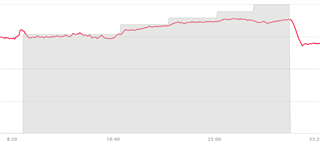Hi all,
Today I decided to do a guided lthr test. Last one was about 4 months ago, and I have been training a lot since. However, I could not meet the last two steps of the test. I should run 4 minutes with heart rate 174-183, and after that 3 minutes 184-195. I never got to that. Yes, 30 secs in 174-176 rate. I could not get it higher. Alter the test run the watch told me "no treshold detected". I was breathing heavily, effort was high. Out of breath with too low heart rate
What is the explanation here?
1. My intense training last months improved my ability to run faster at lower heart rate
2. I should run an hour first, before doing a test? (when I increase speed at the end of a half marathon, I find my heart rate going up to 185-190)
3. (...)
My graph:


